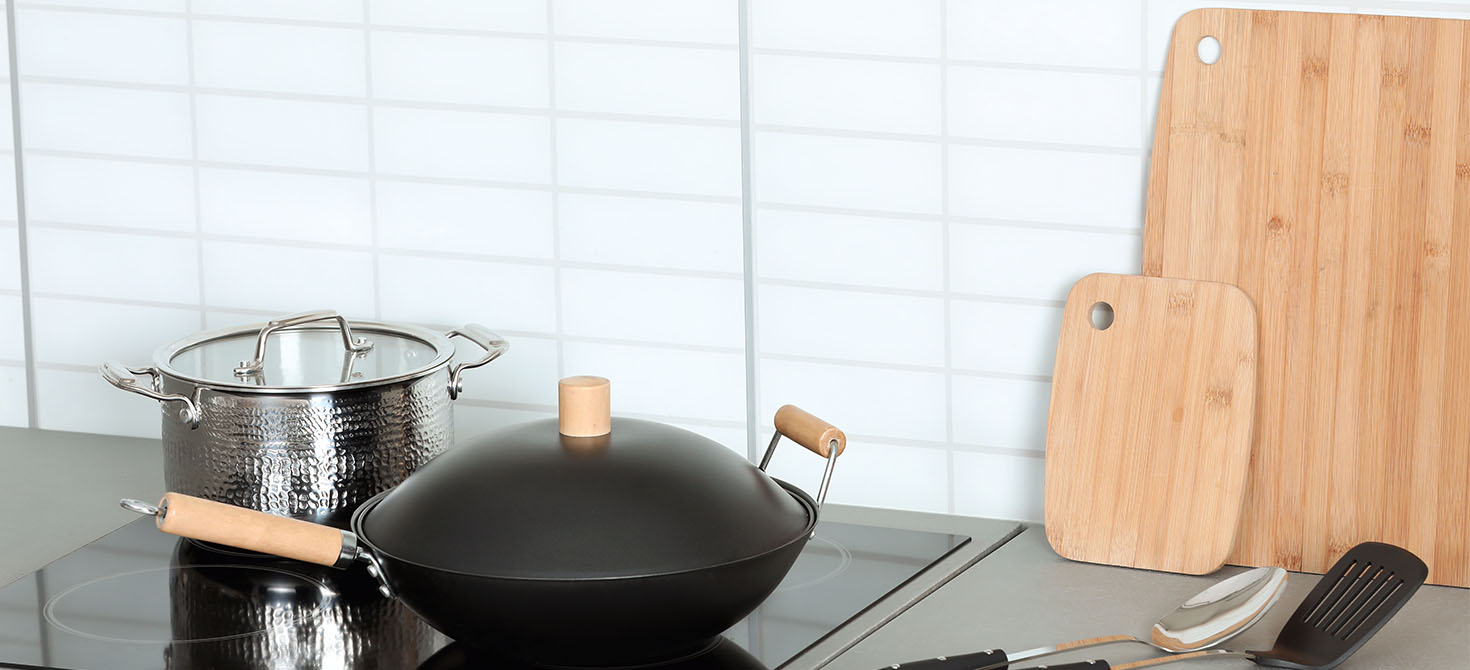- Furnishing tips
- 0 likes
- 2204 views

In this article we will talk about resin tops and coverings. In the previous articles we dealt with the topics of resin for floors and resin used for the creation of bathroom sinks.
This time, however, we want to focus our attention on the use of resin in the kitchen environment for the creation of coverings (kitchen tops and vertical coverings).
Here is all you need to know about this subject!
Index
Resin: an excellent solution for covering a damaged kitchen top
Resin is nowadays a very common material, which is widely used for the creation of many different types of cladding in every room of the house. One of the greatest advantages of this material, from which its great commercial success is probably derived, is its ability to faithfully reproduce the aesthetic appearance of many materials, and in particular of:
- metal
- stone
- cement
- marble
Unlike the materials mentioned above and many other reproducible materials, resin also has the great advantage of being much more practical to handle and requiring less maintenance. Resin, which is generally used for floor coverings, is characterised by a reduced thickness of approximately 2 to 3 mm. Thanks to the total absence of joints, the material is able to offer floors and walls totally linear surfaces.
With regard to the application of resin for kitchen top coating, it is very often decided to give a new look to this important element of this room of the house: especially if the kitchen top has been damaged by the wear and tear of time and its prolonged use. Renovating the kitchen worktop with the aid of resin represents a great opportunity to transform this area of the home in a simple and unobtrusive manner.
Your new resin kitchen top will be an element with great personality and very durable over time. Resin allows you to create kitchen tops with a very modern aesthetic effect. The only negative aspect and disadvantage of a resin kitchen top is the fact that the element will be particularly sensitive to scratches and nicks: it should also be pointed out that the latter will be more noticeable on a smooth surface.
Installation of a cementitious resin kitchen worktop
The term resin is abused in the realisation of coverings in all areas of the home. The entire decoration sector is, so to speak, submerged by the use of this term. In this regard, it would perhaps be more appropriate to speak of a continuous covering: this is certainly the most appropriate term to indicate a covering characterised by a continuous surface, which totally excludes the presence of joints.
As far as continuous kitchen countertop cladding is concerned, it can be made with the aid of epoxy resin or alternatively cementitious resin. Let's find out the main differences between these products. Epoxy resin, as can be seen from the name of the product, is made from epoxy: by the latter we basically mean thermosetting polymers. The use of the latter produces a special glossy effect. The main advantage of this type of surface is the possibility of yellowing over time.
Cementitious resins, on the other hand, are products made from a cement base. These surfaces are characterised by a greater materiality and a more natural effect.
On the subject of resins used to make kitchen top coverings, it should be noted that over the years many manufacturers have come up with their own particular product recipe. For this reason, the macro differences that previously characterised resins have gradually disappeared. Today it is possible to find many cement-effect resins on the market, which differ mainly from an aesthetic point of view, as well as from a chemical and structural point of view.
It is also important to point out that the aesthetic characteristics of the finished product are very important when choosing the type of resin best suited to one's specific needs and requirements: above all with reference to the different types of material that one intends to imitate and reproduce.

However, it is now also possible to think of a continuous coating for the kitchen worktop (for both indoor and outdoor kitchen worktops). This type of surface finish is applied directly onto a rigid support, which acts as a structure. As far as the choice of support is concerned, it is possible to choose between different solutions, including:
- wooden boards
- large bricks with a reinforced concrete slab
- rigid plasterboard
The main objective of the substrate must always be to provide a continuous surface solution, impermeable to liquids (and stains) and resistant to scratches and knocks. Obviously, with heavy use, it is normal that a surface, regardless of its composition, will tend to wear. In this regard, a surface with a cementitious matrix is able to benefit from important aesthetic guarantees, even if the surface resistance is more affected than with an epoxy resin matrix.
A surface with cement-effect resin will certainly create an original texture that will not tend to change colour with the action of natural or artificial light. Obviously, the porosity of this material will make the surface more difficult to waterproof.
Resin kitchen tops, prices
Let us now turn to the cost of producing a resin kitchen top covering. In addition to the use of different types of materials, the price of the covering cannot but be influenced by the thickness of the material applied.
In general terms, we can say that the cost of producing a resin kitchen worktop ranges from approximately Euro 300 per linear metre up to Euro 600.
